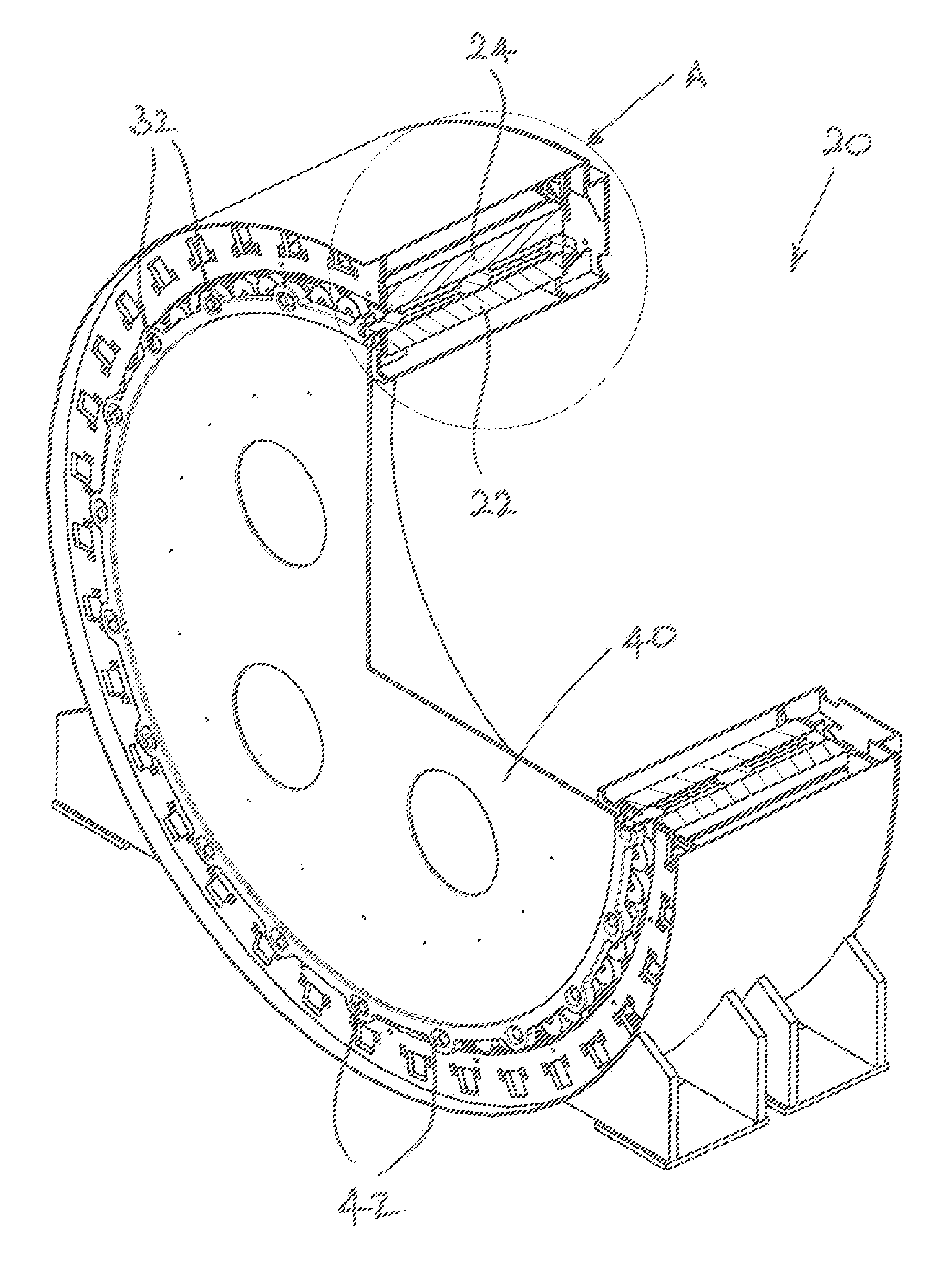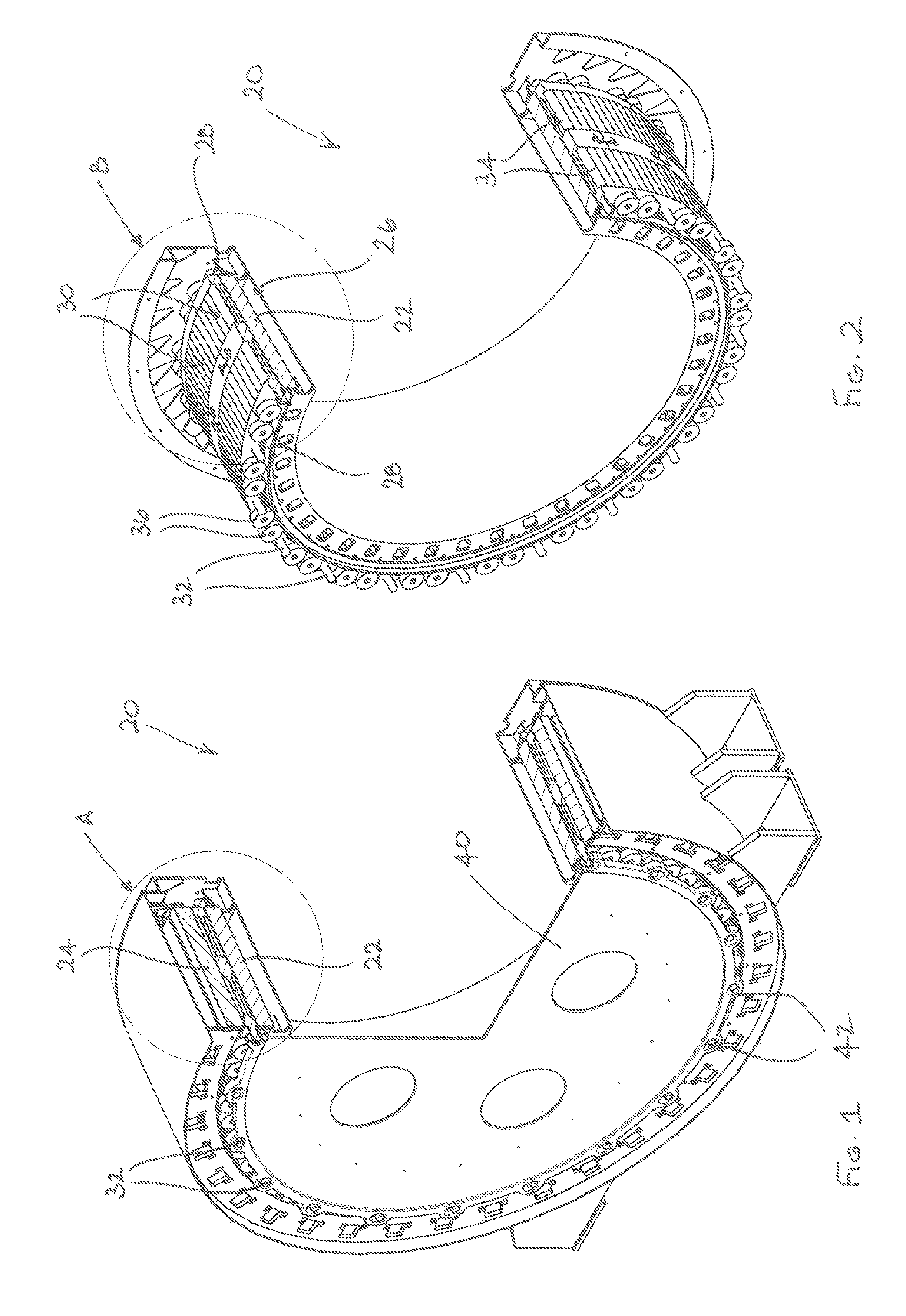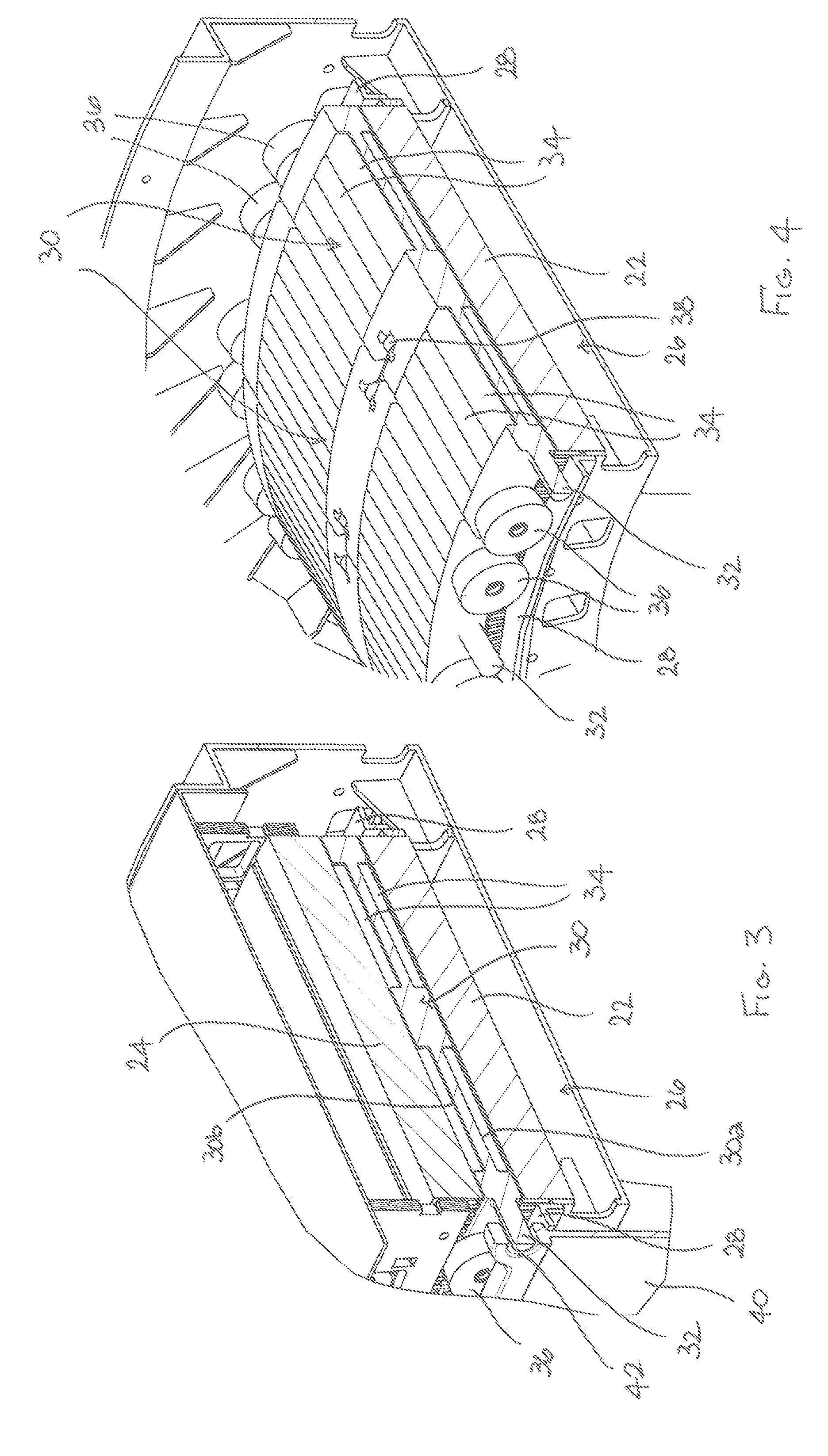Electrical Machines
a technology of electrical machines and rotors, which is applied in the direction of mechanical energy handling, dynamo-electric machines, supports/enclosements/casings, etc., can solve the problems of difficult to ensure, difficult to manufacture and assembly of rotating electrical machines with internal and external cylindrical stators, and complex construction of rotors for low speed high-torque rotating electrical machines, etc., to achieve the effect of facilitating manufacturing and assembly, facilitating operation and facilitating operation
- Summary
- Abstract
- Description
- Claims
- Application Information
AI Technical Summary
Benefits of technology
Problems solved by technology
Method used
Image
Examples
Embodiment Construction
[0051]Embodiments of the present invention will now be described by way of example only and with reference to the accompanying drawings.
[0052]Referring initially to FIGS. 1 to 9, a radial flux rotating electrical machine 20 comprises a radially inner first cylindrical stator 22 and a radially outer second cylindrical stator 24 which is positioned radially outwardly of the first cylindrical stator 22. The first and second cylindrical stators 22, 24 are substantially concentric.
[0053]The first cylindrical stator 22 includes a circumferentially extending guide arrangement 26 which includes two axially spaced circumferential guide rails 28 (best seen in FIGS. 2 and 4). The rotating electrical machine 20 also includes a plurality of circumferentially arranged rotor elements 30 which cooperate with the guide rails 28 for rotation relative to the first and second cylindrical stators 22, 24. The rotor elements 30 cooperate with each other in the circumferential direction to form a continuou...
PUM
 Login to View More
Login to View More Abstract
Description
Claims
Application Information
 Login to View More
Login to View More - R&D
- Intellectual Property
- Life Sciences
- Materials
- Tech Scout
- Unparalleled Data Quality
- Higher Quality Content
- 60% Fewer Hallucinations
Browse by: Latest US Patents, China's latest patents, Technical Efficacy Thesaurus, Application Domain, Technology Topic, Popular Technical Reports.
© 2025 PatSnap. All rights reserved.Legal|Privacy policy|Modern Slavery Act Transparency Statement|Sitemap|About US| Contact US: help@patsnap.com



